Twill (fabric) - what is it and what is interesting about it? How can it be used and properly cared for? Maybe it is related to asparagus? This and more is below in the article.
History of creation
Twill is a collective name for a special type of dense fabric that gets its name not from the type of raw material used, but from the method of weaving. The material is made using diagonal weaving of threads.
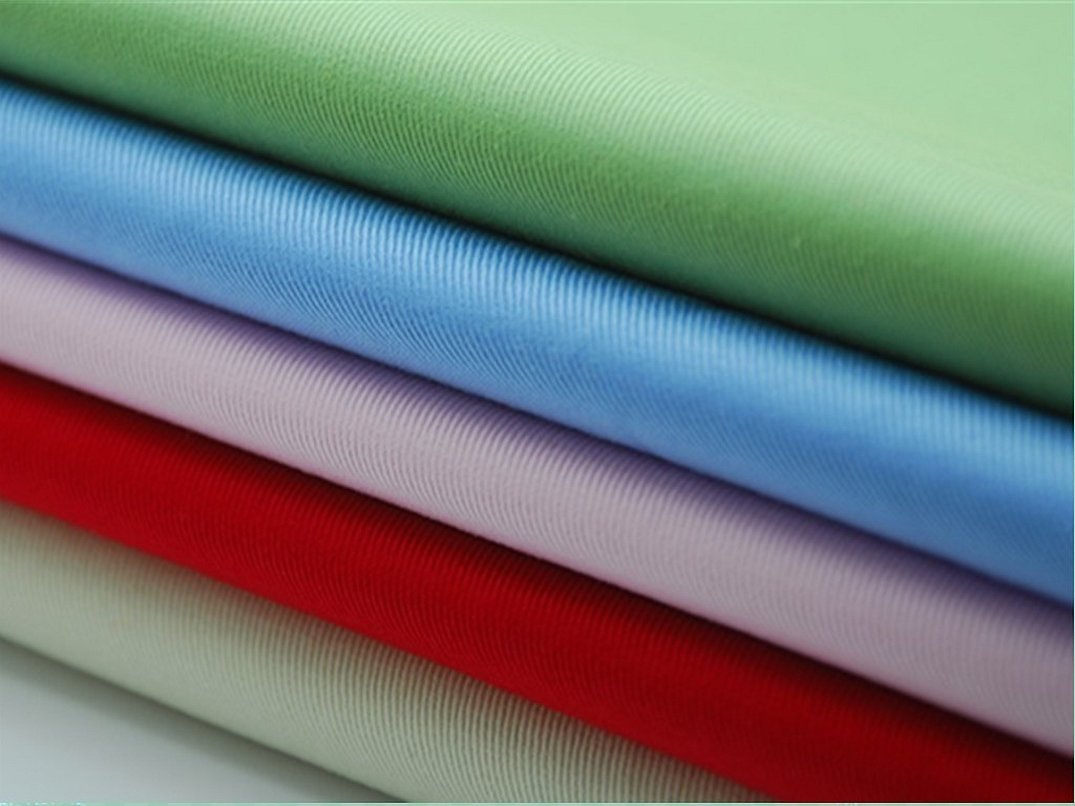
For your information! The material is of French origin, in its homeland it is called Serge. In the city of Nimes (De Nim) in the 300s A.D. such an unusual fabric appeared, which was used for a long time as a working cloth. Later, the French improved the production to such an extent that they began to sew suits, dresses and even bed linen from it.
American L. Strauss brought it worldwide fame by using it in his jeans. The cotton twill fabric used to make jeans is now called denim, which literally means "from Nimes". And the jeans themselves have turned from work clothes into an integral attribute of a modern person.
Twill is rapidly gaining popularity due to its versatility. A wide range of applications: from workwear to elegant festive clothing, guarantees high demand for it.
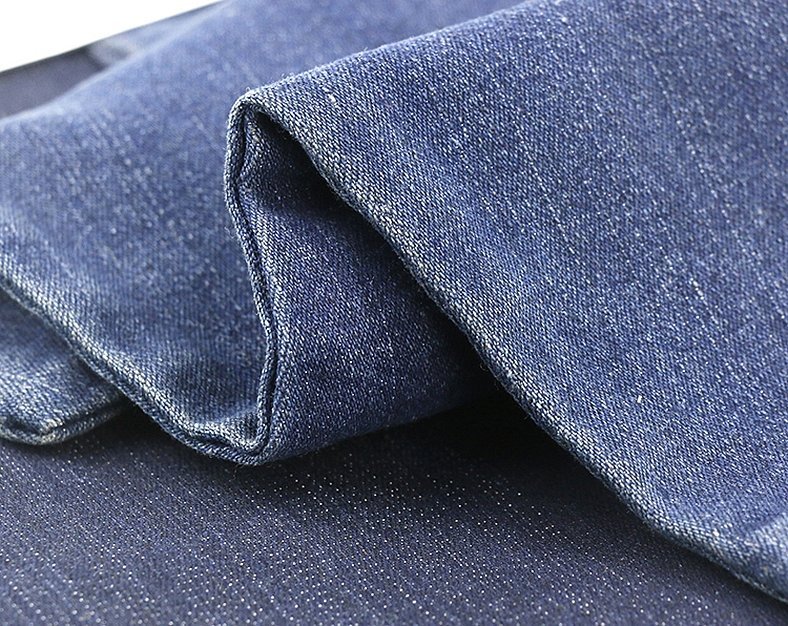
Composition of fabrics and their properties
It became universal due to its composition. The variety of raw materials used provides a wide range of options for use in everyday life. Twill can be natural and artificial.
Depending on the composition, the properties may differ, but all twill fabrics have the following basic properties:
- density;
- wear resistance;
- Resistance to ultraviolet radiation characterizes twill of any composition; the fabric does not fade in the sun.
Natural twill: types and characteristics
The following types are distinguished:
- cotton (cotton) - it is the densest, containing 100% cotton;
- silky, shiny and smooth;
- woolen;
- linen.
Natural fabrics have the following properties:
- air permeability;
- thermoregulation: it is not cold in winter, and in summer there is no “thermos” effect;
- good hygroscopicity;
- hypoallergenic;
- environmental friendliness.
Please note! Twill, made from 100% Uzbek cotton, is called Uzbek twill. During the times of total deficit in the USSR, jeans were made from it, trying to reproduce the quality that was not inferior to classic denim. But the fibers of Uzbek cotton are not as long. Therefore, it was not possible to repeat the success. But it is actively used for sewing work clothes.
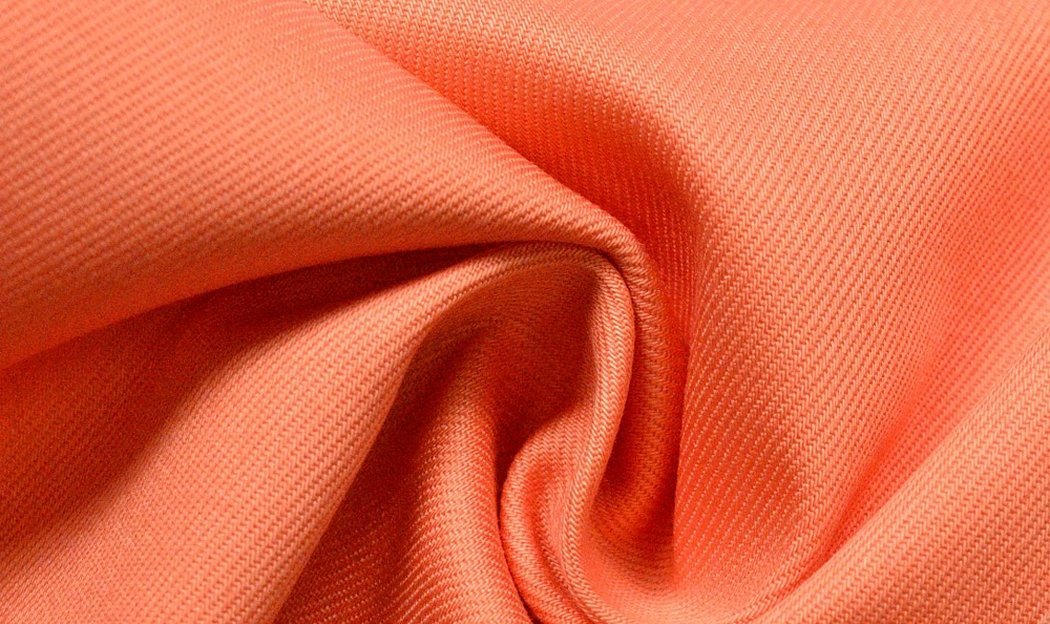
Artificial twill, types and characteristics
The following types of fabric are distinguished:
- polyester;
- viscose;
- stretch (contains elastane fibers).
It has the following properties:
- elasticity;
- partial resistance to chemical reagents.
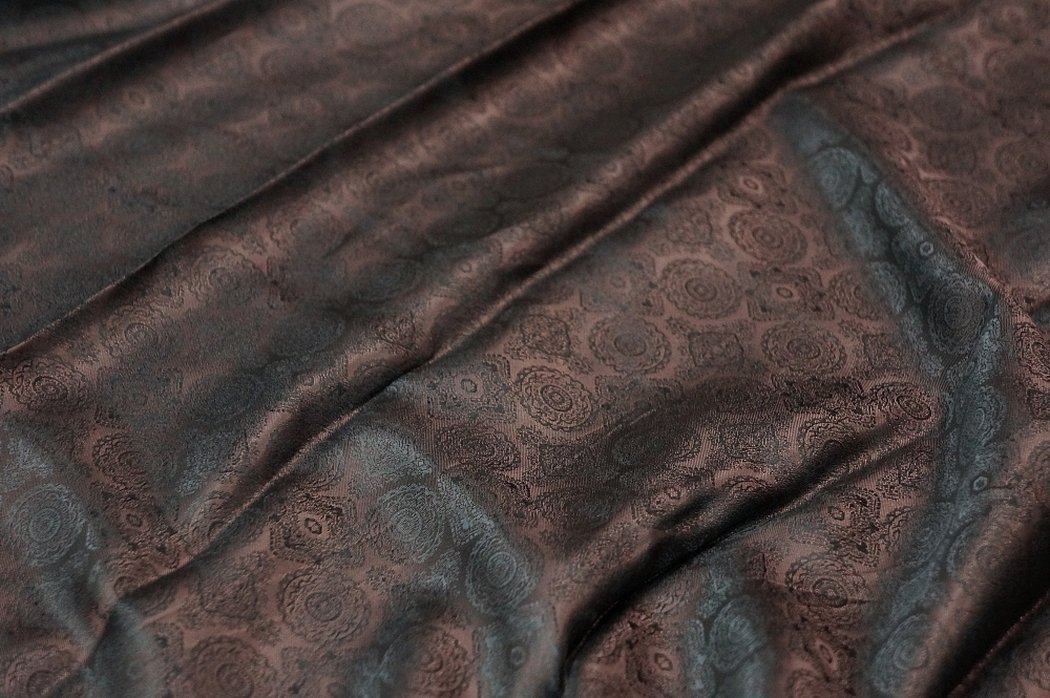
There are also various combinations of natural and artificial fibers. Most often, viscose or polyester is added to cotton, which increases the durability of the fabric.
Features of weaving
The method of creating twill fabric does not depend on the raw material used. The production method is the same for any thread. A special weaving method is used - twill. It is also called caper or diagonal. In ordinary fabrics, the weave of the weft and warp is constant, does not shift, and in twill fabric, the weft is shifted relative to the warp. The density of the twill depends on the order of the shift: a small one produces a thin fabric with a small rib, a strong one - a wide strip. The slope of the stripes is also important. Usually, stripes are made with a slope to the right, but there is also left-slanted twill.
Depending on the fineness and slope of the thread, as well as the type of weaving, twill can be:
- classic - lines of equal width with a rightward tilt;
- broken - a small rib with a leftward tilt, resulting in a herringbone pattern, the fabric is thinner;
- complex - diagonal stripes of different widths, which increases the density of the fabric;
- reinforced - high-density fabric with wide diagonal stripes;
- zigzag - the weft threads are directed alternately to the left and to the right.
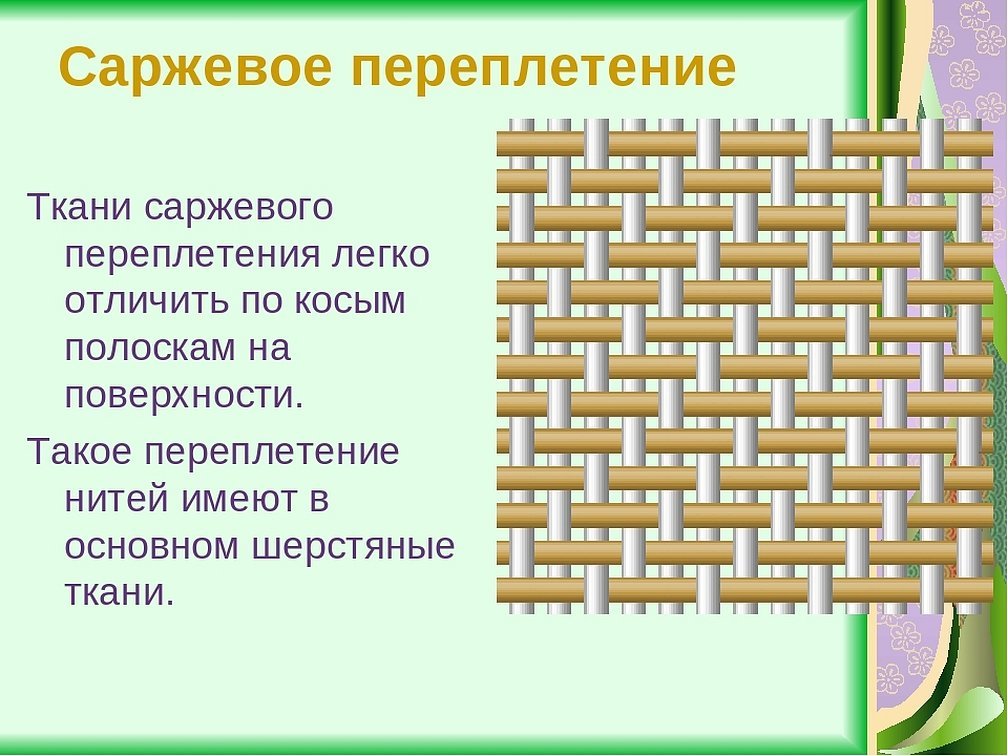
Scope of application
The scope of application of twill directly depends on the composition of the fabric. Depending on the amount of natural and artificial fibers in the composition, it is divided into the following types:
- raw twill is a material made from natural cotton. It has increased wear resistance, which is why it is used for sewing work clothes, bags, gloves, and hats;
- lining twill - this is when viscose is added to natural silk or cotton fiber, which increases the elasticity of the fabric. It is used for lining in suits, coats;
- Silk twill is a natural material made from 100% silk, very smooth and pleasant. It is used to make underwear, bed linen, pajamas and dressing gowns.
For your information! There is also a separate type of twill - bleached. This is a raw twill, dyed using a plain dyeing or printed method.
Natural cotton twill is used for medical gowns and suits, as well as work clothes for workers in the food and chemical industries. Clothes for cooks and kitchen workers, security guards, universal uniforms for store workers - all this is cotton twill.
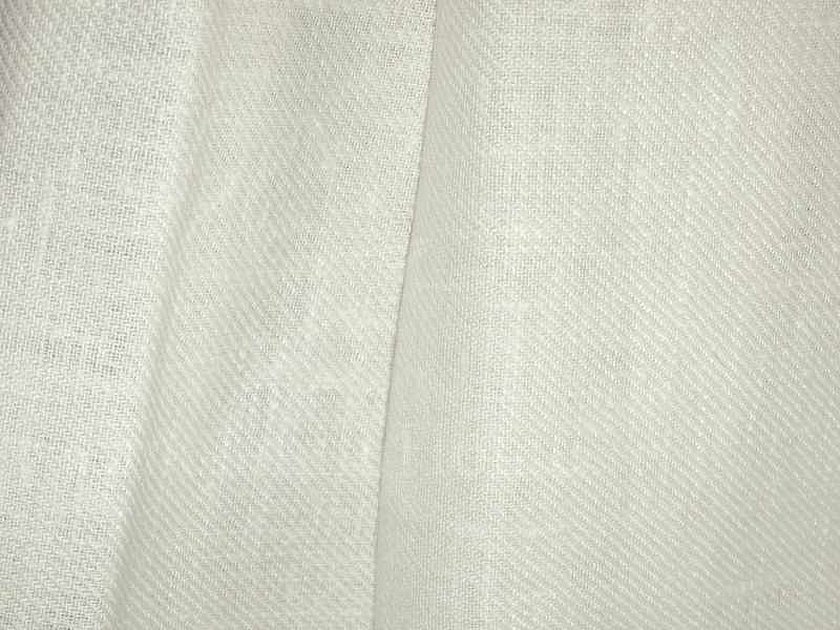
Fabric impregnated with a special water-repellent composition is used for upholstery of furniture and mattresses.

The most durable material is used for the production of belts, sashes and other technical equipment.
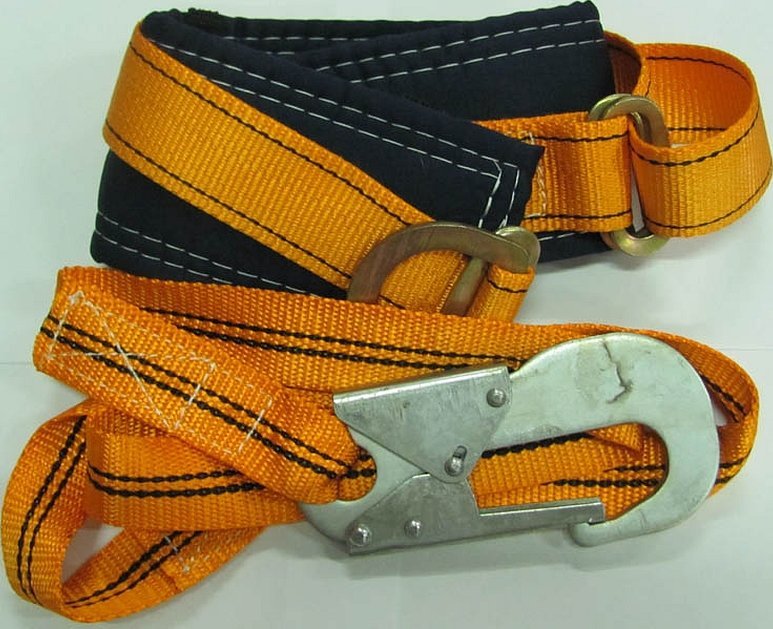
Woolen fabrics are used for suits, dresses and jackets.
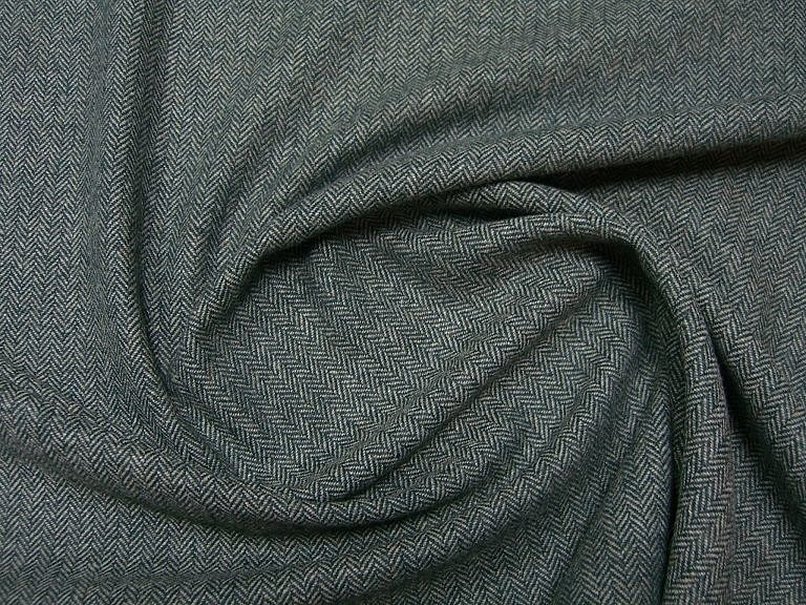
Mixed twill is also used to make home textiles - curtains, drapes, tablecloths.

Please note! Beige field suits are called "Afghanka" or "Pesochka". They are made of 100% twill cotton.
Care of products
Since twill can be made from different materials, you need to know the exact composition to care for it. To do this, you can refer to the description on the clothing label and, depending on this, select the correct washing mode:
- Cotton can be washed at high temperatures up to 90°C.
- for silk, synthetics or wool - no more than 40°C;
- do not use bleach or other chemicals;
- iron on the reverse side;
- To clean furniture upholstery or the lining of outerwear, you can use a cotton swab slightly moistened with liquid detergent;
- Special clothing can be treated with disinfectants.
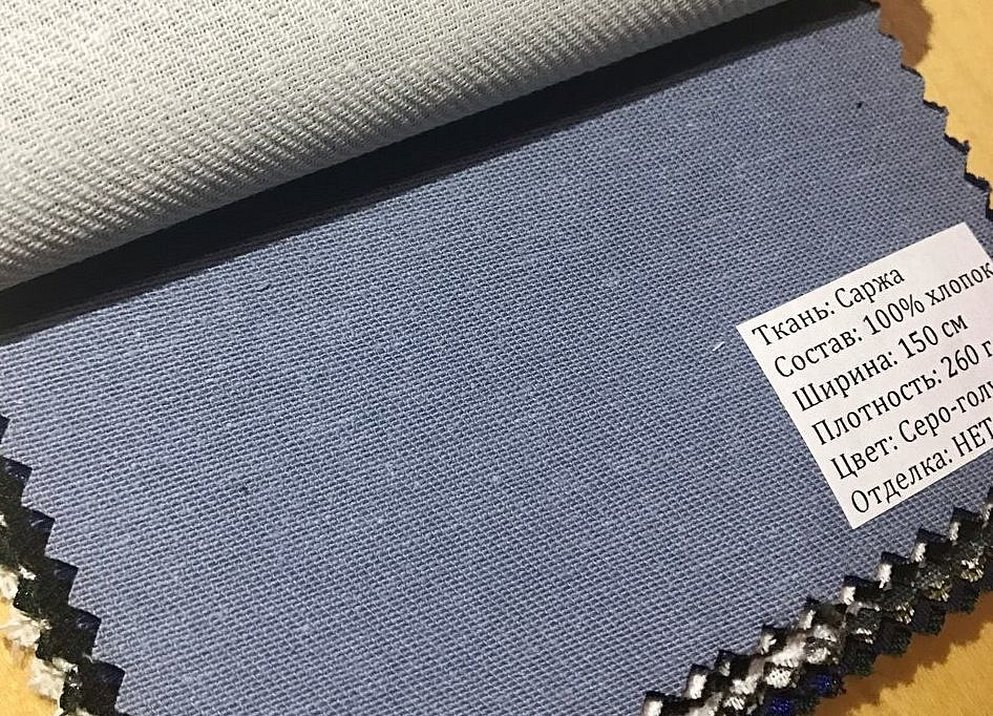
Advantages and disadvantages
Twill has many advantages:
- a large selection of fabrics for every taste, color and budget;
- dries quickly after washing (or after rain);
- does not require special delicate care (except for silk fabrics);
- practically does not wrinkle;
- does not absorb foreign odors;
- does not fade during washing, colors remain bright;
- does not become electrified;
- does not fade in the sun;
- no pellets appear;
- wear-resistant.
There are only two disadvantages: natural twill is not elastic and shrinks when washed, which should be taken into account when choosing the size of clothing.
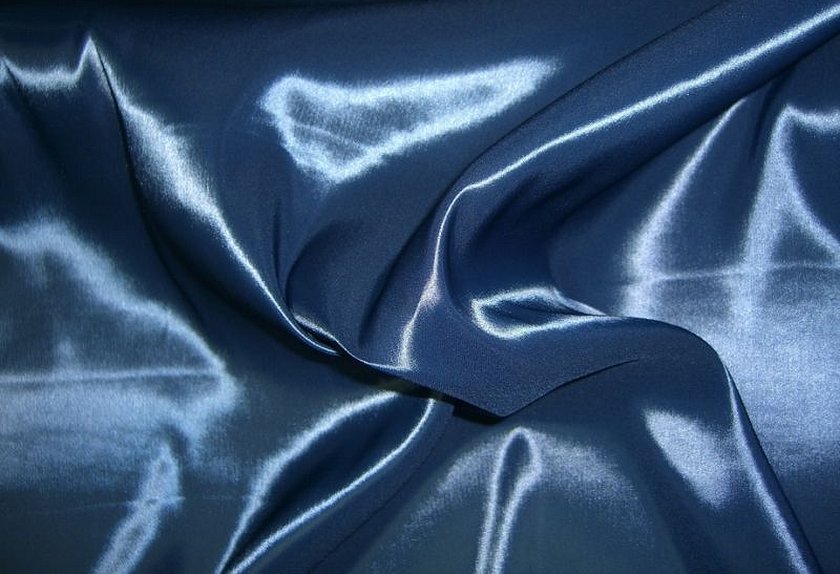
Reviews
The reviews on the Internet are mostly positive:
Ekaterina, 42 years old, Kaluga
"I work as a nurse, I always have to wear a white coat to work. I have to wash them often, sometimes every day. But twill holds up! Fortunately, everything washes out and dries very quickly. And despite frequent washing, it still looks great. It seems to be the best material in medicine."
Alexey, 27 years old, Omsk
"I work as a foreman at a construction site. We are not issued special clothing very often, only once a year. But twill overalls last until the next issue. They withstand snow and rain well. They do not wrinkle, and most importantly, they wash well. It turns out that mittens and safety belts are also made from twill. You can't do without it on a construction site."
Valery, 30 years old, Vladimir
"I work at a furniture factory. I do upholstery for sofas and armchairs. We often use twill. It is quite durable, looks good, and the sofas are inexpensive. Therefore, the demand is high, and there are always a lot of orders."
Twill is not related to asparagus. But it does not lose out at all because of this. Due to its versatility and low price, it is very popular in all areas: from underwear to workwear. Not every fabric is capable of this.




